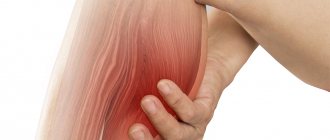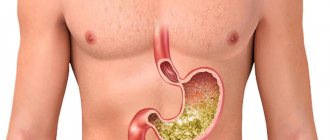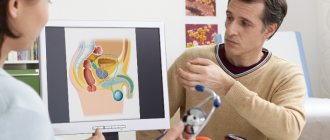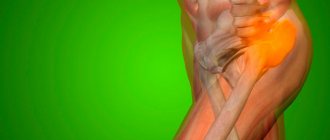Doctors most often encounter pain in the lower right side of the abdomen. This is due to the appendicular process located here and its inflammation. Statistics of surgical interventions in the general surgical department show that appendectomy causes maximum activity.
However, right-sided lower abdominal pain is not limited to a single cause. There are quite a few other organs in this zone, the pathology of which leads to pain. To be sure of appendicitis, you have to exclude signs of all diseases with similar pain.
According to the nature of the course and consequences, they are no less dangerous for humans. A careful analysis of the patient’s complaints, additional signs, confirming and refuting examination data helps to find out exactly why the lower abdomen hurts.
Diseases of the biliary tract
Biliary colic may manifest itself as pain in the abdomen on the right. The pain is localized in the right hypochondrium and epigastrium (upper abdomen), sometimes radiating to the scapula 1, 2. It is worth noting that if biliary colic occurs, it is important to consult a doctor who will diagnose and prescribe treatment.
Biliary colic is one of the main manifestations of acute cholecystitis against the background of cholelithiasis1. The cause of cholecystolithiasis is gallstones from cholesterol crystals, salts and other substances that block the cystic duct of the gallbladder. This leads to increased pressure in the biliary tract and the occurrence of spasms. In addition, stones and crystals can irritate the lining of the bladder and bile ducts6, 17, 18.
The result is a pain syndrome that ranges from mild to severe. Sometimes it is accompanied by nausea and vomiting, but symptoms of intoxication (fever, weakness) are often absent6. The pain occurs suddenly and lasts from 15 minutes to several hours. The frequency of attacks also varies: from daily to once a year or even less often6.
For pain associated with spasm in diseases of the biliary tract, taking antispasmodic drugs can help1. For example, the active component of the drugs No-shpa® and No-shpa® forte, drotaverine, helps relax the smooth muscles of internal organs (including the biliary tract), helping to relieve pain7, 22.
Pain in the right hypochondrium can be associated not only with cholelithiasis, but also with other diseases of the biliary tract, for example, cholecystitis or papillitis1.
Diagnostic methods
To accurately determine the causes of the pathology, a woman should visit a gynecologist or gastroenterologist to receive a referral for examination. Instrumental diagnostic methods include: ultrasound, x-ray, MRI and CT if necessary. Blood and urine tests are required.
Sometimes consultation with additional specialists is required - an endocrinologist, urologist. If you can’t make an appointment with a specialized specialist, you can start the examination at the therapist’s office. In some cases, specific diagnostic measures are required: ECG, laparoscopy.
Pancreatic diseases
Pain usually occurs when this organ becomes inflamed and can be felt in several places. For example, when the head of the gland is affected, it is felt in the right hypochondrium, sometimes taking on a encircling character1. Some people are bothered by nagging and aching pain in the back1.
Pain from pancreatic disease may be worse when a person is lying down, but usually gets better when sitting because the tension on the pancreatic capsule is reduced1.
Pain due to diseases of the pancreas can be constant and painful. Their intensification can be provoked by the nature of the food and drinks taken: with alcoholic pancreatitis, complaints become more intense after eating spicy and sour foods, and with inflammation of the pancreas associated with damage to the ductal system - after eating fatty foods8.
Pancreatic pathology is also characterized by weakness, irritability, insomnia, and decreased performance. From the digestive tract, nausea, vomiting without a feeling of relief, bloating, alternating diarrhea and constipation may occur8.
Recently, the incidence of pancreatitis has been steadily increasing due to alcohol consumption8.
Irritable bowel syndrome (IBS)
This condition is not associated with changes in the structure of organs and systems. However, pain with irritable bowel syndrome is almost always observed and is a common symptom overall. Women usually suffer from IBS more often than men. Pain (from moderate to severe) can cover the lower abdomen, including the right side, but is most often localized on the left9. IBS often develops against the background of psychoemotional disorders10.
Symptoms of the disease usually subside in the evening and do not bother patients at night. The pain in some cases spreads to the upper abdomen, radiating to the rectum and epigastric region9-11. An important role in the formation of complaints is played by impaired intestinal motility, accompanied by spasm. As part of complex therapy for IBS, antispasmodics (for example, No-shpu® and No-shpu® forte) can be used, which helps reduce pain7, 12, 22.
Effective treatment methods
For the treatment of pathologies such as peritonitis or ectopic pregnancy, there are no other methods other than surgery. If stabbing pain is combined with fever, discomfort in other parts of the abdomen, vomiting and bowel irregularities, it is better not to delay calling an ambulance.
In other cases, for example, with enteritis or hepatitis, drug therapy is prescribed. It is also used during the recovery period after operations:
- take antibiotics against inflammation;
- NSAIDs and antispasmodics are used to relieve pain;
- to normalize microflora, drink probiotics;
- Diuretics are used to treat the kidneys and urinary system.
Also, for successful treatment, it is important to follow other rules - engage in physical therapy as prescribed by a doctor and follow a strict diet.
Urinary tract diseases
Pain on the right side may be caused by urolithiasis. If the right ureter is affected, there may be pain on the right in the abdomen and lower back1, 2. When the stone moves, the pain on the right can move to the lower abdomen, radiate to the genitals, and the inner thighs. If the stone is located in the lower third of the right ureter, the person is bothered by a constant painful urge to urinate2, 13. The pain is usually wave-like in nature, and for spasms in diseases of the urinary tract, the use of antispasmodics, for example No-shpa®, may be indicated or No-shpa® forte7, 13, 16, 22. The passage of stone or sand from the ureter is often manifested by pain and blood in the urine13.
What to do in case of acute pain
When the lower abdomen and lower back hurt, we often start looking for reviews from other people who have already encountered such a situation in order to understand the reason and determine the course of action for ourselves. It is worth understanding that it is unlikely that you will be able to make an accurate diagnosis for yourself; here you need to immediately seek qualified help from specialists. If the pain is acute and sharp, it is best not to hesitate and call ambulance workers so that you can be examined and brought to the clinic as soon as possible for diagnosis and diagnosis. After this, you will be prescribed treatment, and you can expect an improvement in your condition.
Pain in the lower abdomen on the right side in women
On the right side of women are the right appendages of the uterus: fallopian tube and ovary. With inflammatory diseases of the pelvic organs, there may be pain in the lower abdomen on the right. Pain during the chronic process is aching, spreads to the lower back and suprapubic region, and is often combined with urinary disorders. Exacerbations may be accompanied by chills, nausea, sometimes vomiting, and discharge from the genital tract2, 14.
If the pain in the lower abdomen on the right begins suddenly and sharply, it may be a rupture or torsion of the cyst leg, or an ectopic pregnancy. The right lower abdomen hurts sharply, sometimes leading to fainting, the pain often radiates to the rectum. Patients try not to move so as not to increase the pain. Signs of intoxication and circulatory disorders may gradually appear: pallor, cold sticky sweat, nausea and vomiting, rapid heartbeat, and sometimes bloody discharge appears from the genital tract2, 14. Of course, if such symptoms appear, you must immediately seek medical help.
Pain in the right lower abdomen may periodically occur due to the connection with the menstrual cycle. Pain during menstruation can manifest itself as cramping or be aching and bursting. They often arise in the lower abdomen and then spread to the back, inner thighs, and rectum19-21.
What can hurt on the lower right?
Pain in the right lower abdomen can bother both children and adults. In childhood, chronic pathology rarely has time to develop, so the cause is looked for as an acute illness or a manifestation of physiological inferiority or congenital anomaly.
In adults, a host of chronic ones are added to the “list” of possible diseases. Some proceeded secretly for a long time. Hormonal imbalance has a serious impact on the functioning of the genital organs. During menopause, inflammatory processes are activated in women and men, and epithelial tissue undergoes transformation.
The lower region of the abdomen on the right and left is called the iliac region, named after the protruding ridges of the pelvic bone. On the right side lie the following anatomical structures:
- immediately under the skin there are dense muscle cords and aponeuroses (tendons) of large muscles that form the anterior abdominal wall;
- part of the adductor section of the right ureter;
- vertically located loop of the small intestine (ileum);
- ileocecal angle - the connection of the beginning of the large intestine (cecum) with the final part of the small intestine, represented by the ileum;
- appendix - a branch of the cecum;
- in women, the right ovary with the end of the fallopian tube.
Here, in fact, in 90% of people, the small intestine fits from the side and forms an acute angle, if you take into account the direction of the connection
It is completely in vain that some authors refer to the location in this area of the bladder, prostate in men and uterus in women. These are not such huge organs that they extend from the central pubic region.
Even a full bladder rises up, rather than spreading out to the sides. Another thing is the ability, during hypertrophy and inflammation, to give radiating pain to the right side and lower abdomen, to adhere to the ligaments and form adhesions with the intestines.
Acute appendicitis
Perhaps this is the first pathology that a person thinks about when pain appears in the lower abdomen on the right. The pain in this case does not go away, arising near the navel, and eventually moves downwards1, 2, 15. The sensation may begin as dull, gradually becoming tugging, cutting, burning. A person’s health deteriorates and symptoms of digestive disorders occur: vomiting, bloating, constipation, and sometimes diarrhea15.
Acute appendicitis is treated surgically; if similar symptoms appear, you should immediately call an ambulance1.
Characteristics of pain
Patients describe their feelings as best they can, but sincerely. Therefore, the doctor must pay close attention to the subjective perception of pain, try to clarify and obtain the necessary information. In addition, during examination and palpation of the abdomen, the specialist makes indirect conclusions about the intensity and sensitivity of a particular person.
If the patient considers pain on the lower right side to be “weak”
Practice proves the need for the same approach to both intense and mild pain. Many tumor diseases begin this way. Detecting a disease while an organ is able to fully restore its functions is the dream of doctors.
Mild pain begins:
- inflammation of the right appendage in women, at the same time there may be a connection with “critical” days, disruption of the menstrual schedule, the appearance of moderate brownish discharge from the vagina;
- Prostatitis and adenoma in men in the initial stage cause low-intensity pain above the pubis, in the groin, radiating to both iliac zones, sometimes this is discovered when contacting a urologist-andrologist about decreased potency or an infertile marriage.
Nagging pain
A nagging pain in the right side and lower abdomen is considered quite tolerable. Patients do not always mention this. Typically, this nature is inherent in chronic processes with slow growth of the organ, the formation of adhesions and tension of the ligaments.
As a physiological reason, a similar complaint can be cited for primiparous women. Their pain syndrome is caused by a growing uterus and stretching of the ligamentous apparatus. However, when understanding why the right side of the lower abdomen hurts in a pregnant woman, maximum caution is necessary.
The woman may have previously had a chronic disease that she herself did not suspect or does not want to talk about.
More often, this is how chronic inflammation of the right appendage (adnexitis), appendicular infiltrate manifests itself, with the attack stopping on its own and becoming chronic. Of particular importance is the transition from the nagging nature of the pain to pulsation. This indicates suppuration within a limited focus, the addition of a more powerful infection.
Infection is accompanied by high fever
It's a dull pain
When patients are bothered by aching pain in the right side of the lower abdomen, it leaves an imprint on the appearance: the person is truly exhausted by incessant thoughts about the disease, malaise, lack of sleep, and the inability to work calmly.
This perception applies to emotionally unstable, easily vulnerable people. This is how women assess their condition in the last month before giving birth. Lack of constant localization and distribution throughout the abdomen is typical of irritable bowel syndrome. In order not to bring a person to a nervous breakdown, it is necessary to conduct a full examination and convince him to use minimal means, take care of his diet and diet.
Blunt pain
The probable cause of dull pain in the right iliac region in women may be a moderate enlargement of the ovary with increased blood supply and chronic inflammation. If the pain is cyclical and appears regularly, this may indicate a tissue reaction to the maturation of the follicle.
How does appendicitis start to hurt?
If there is no connection with menstruation, chronic adnexitis and a cyst on the right should be excluded. Thin people with an asthenic physique are prone to prolapse of the right kidney. Sometimes it reaches from below to the small pelvis, has increased mobility, and therefore constantly stretches the ligaments.
In this situation, favorable conditions are created for infection and the development of right-sided pyelonephritis. The patient's history of pain ranges from nagging, dull and intense with exacerbation, with fever, chills, irradiation to the right side and lower back.
How to evaluate the pulsating nature of pain?
Throbbing pain in the lower abdomen on the right is described by patients as “tugging”, “moving”, “rhythmic contraction” of the insides. The symptom occurs when suppuration forms near the nerve endings. Usually it should be regarded as a dangerous signal of the transition of ordinary inflammation to gangrene with appendicitis, adnexitis.
It is very dangerous to feel a throbbing pain in the right side in the postoperative period against the background of a rise in temperature and changes in the blood count. We are talking about a complication that can quickly turn into a septic state in a weakened patient.
Similar manifestations occur in women with a complicated abortion, accumulation and suppuration of blood in the uterine cavity after a difficult birth. The irradiation of such pain is different: in the right thigh, in the hypochondrium, in the side and center of the abdomen.
Additional symptoms are:
- repeated chills;
- nausea;
- heavy sweating;
- thirst;
- dizziness;
- heartbeat;
- drop in blood pressure;
- bloating;
- increasing weakness.
To have an induced abortion, a woman must be sent to a specialized department where observation is carried out in the first 3 days









